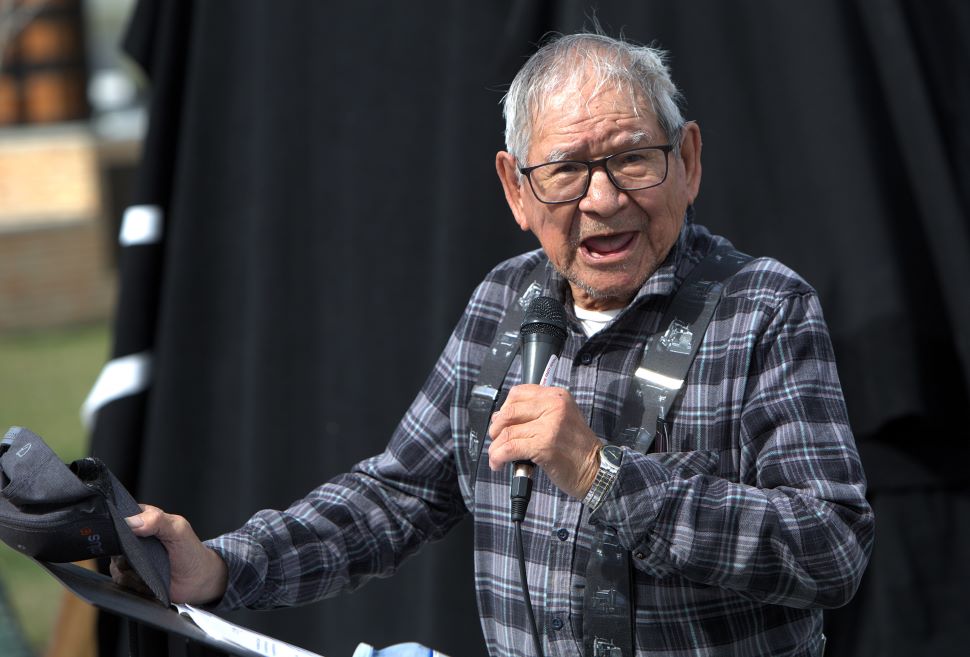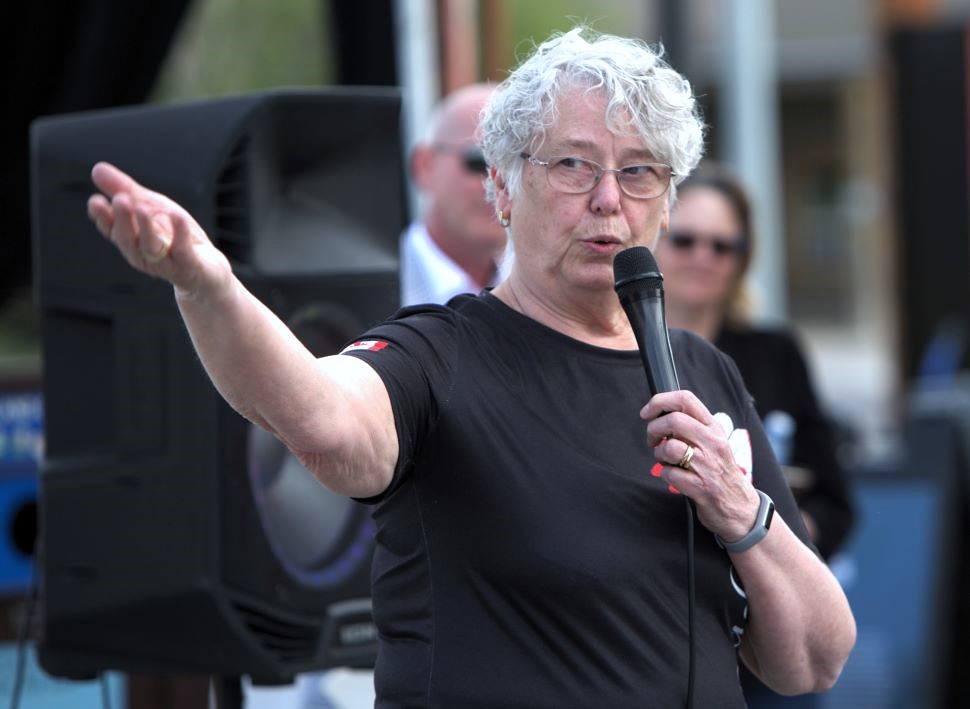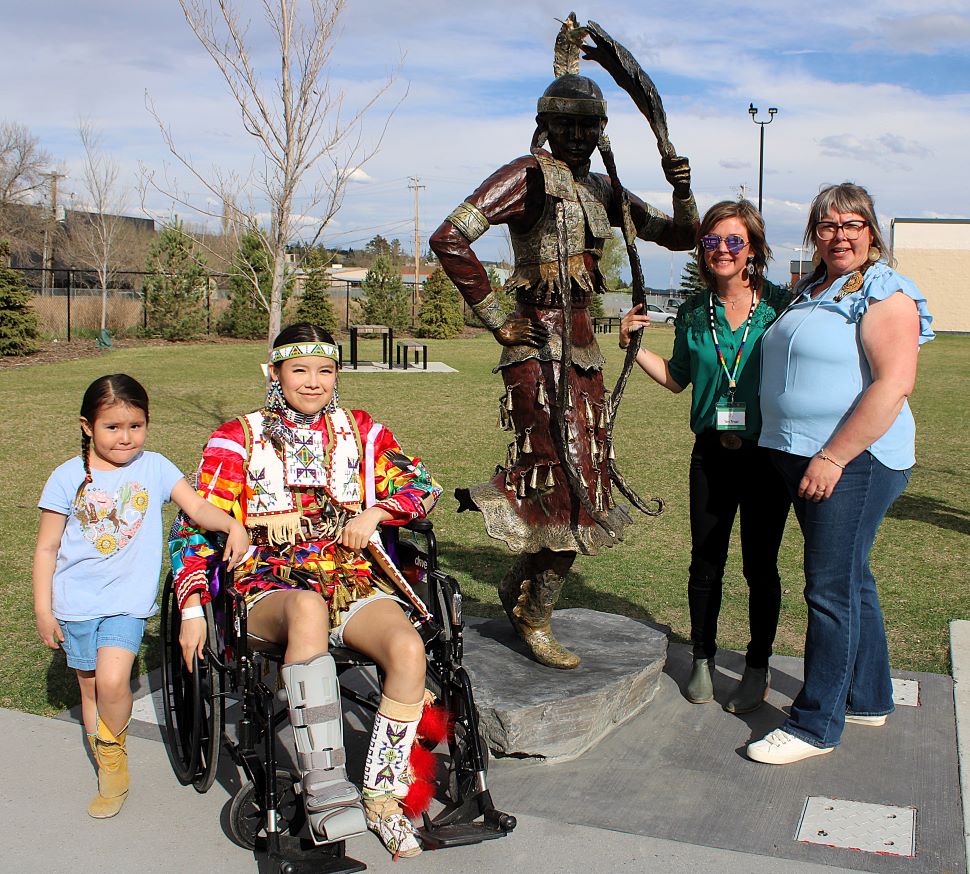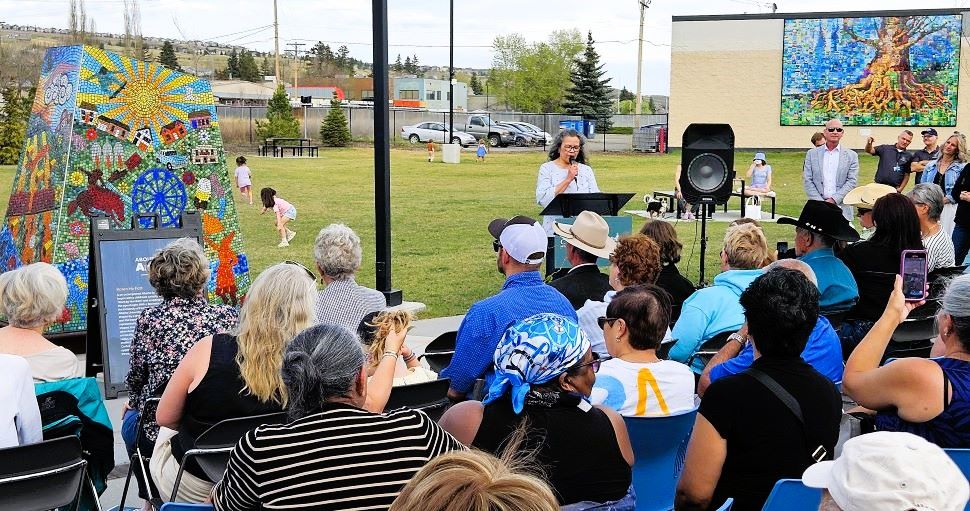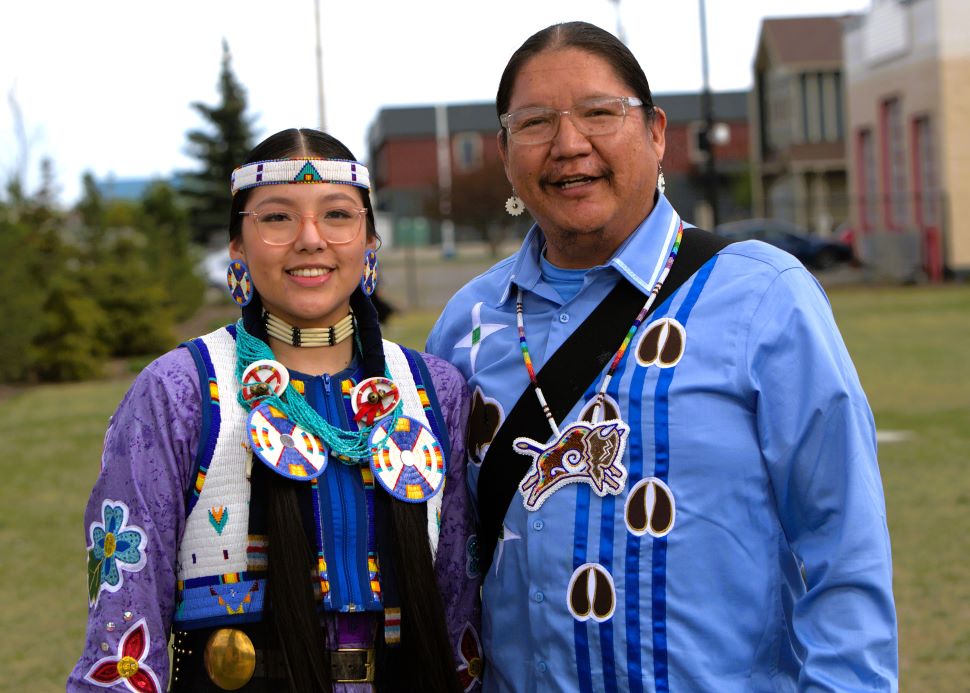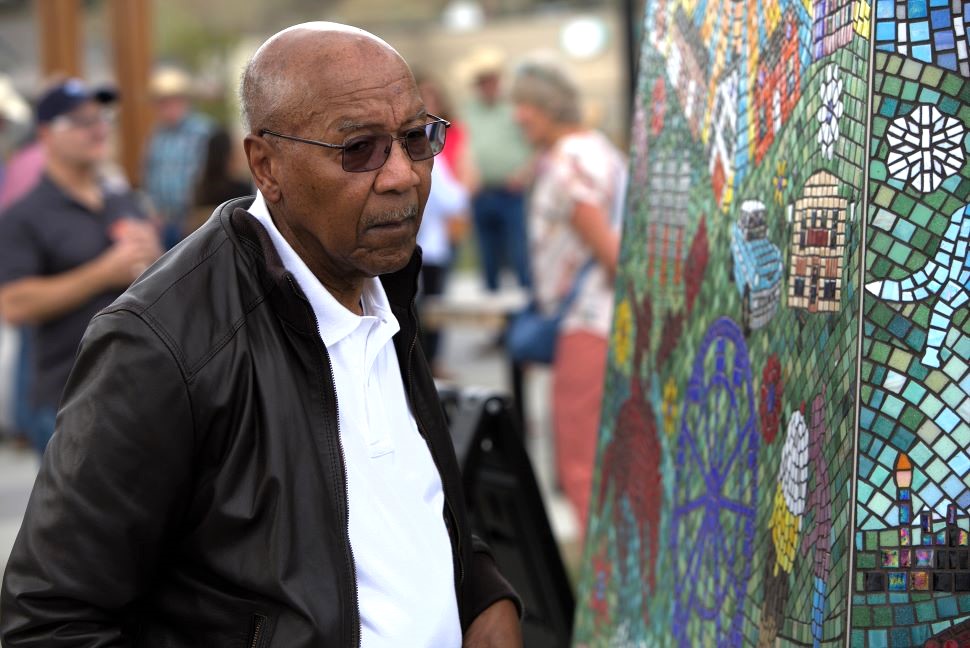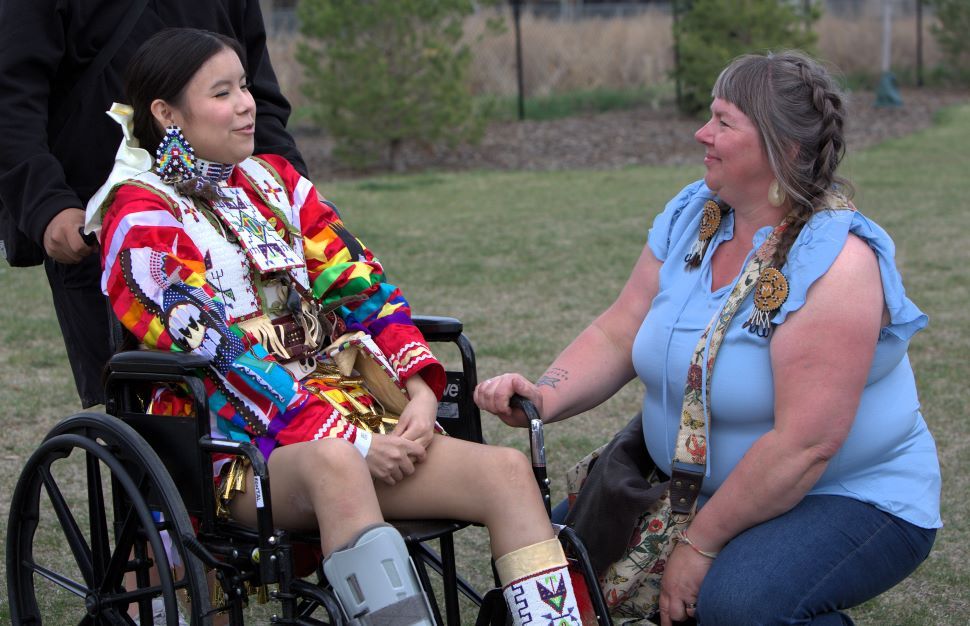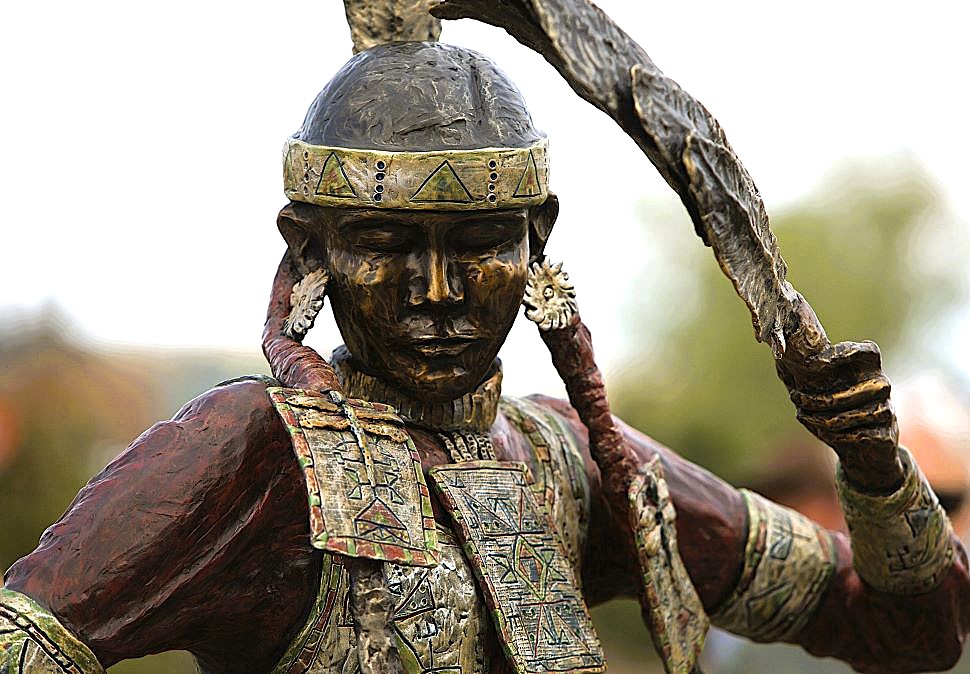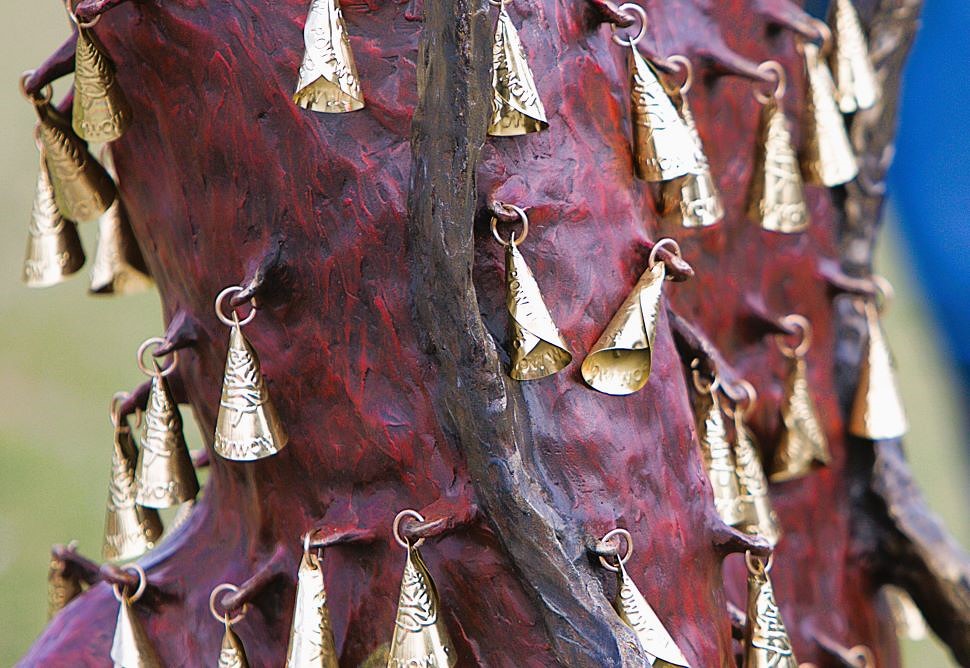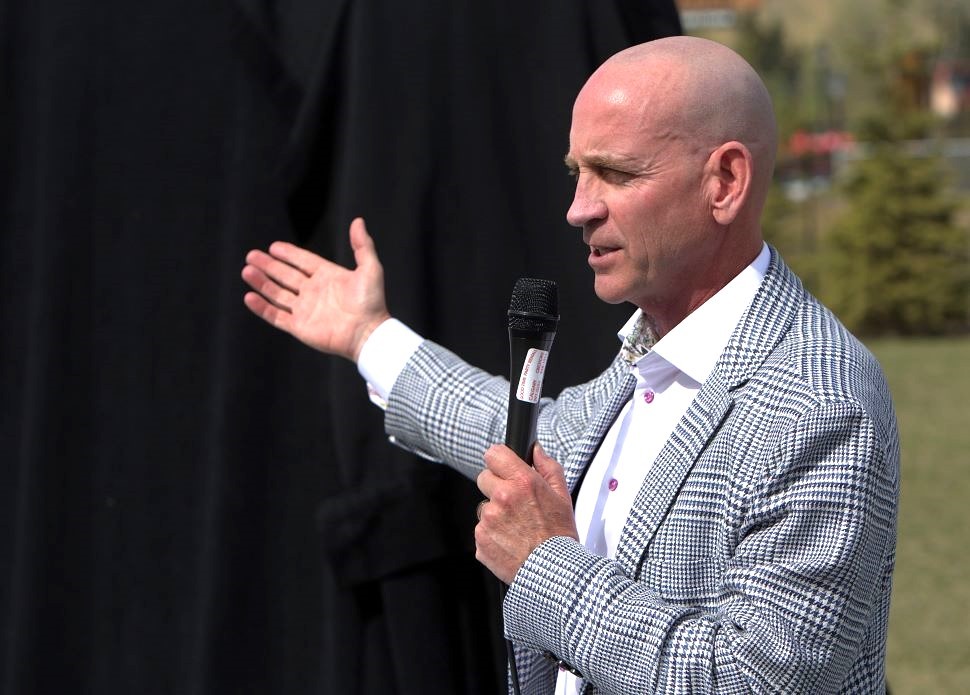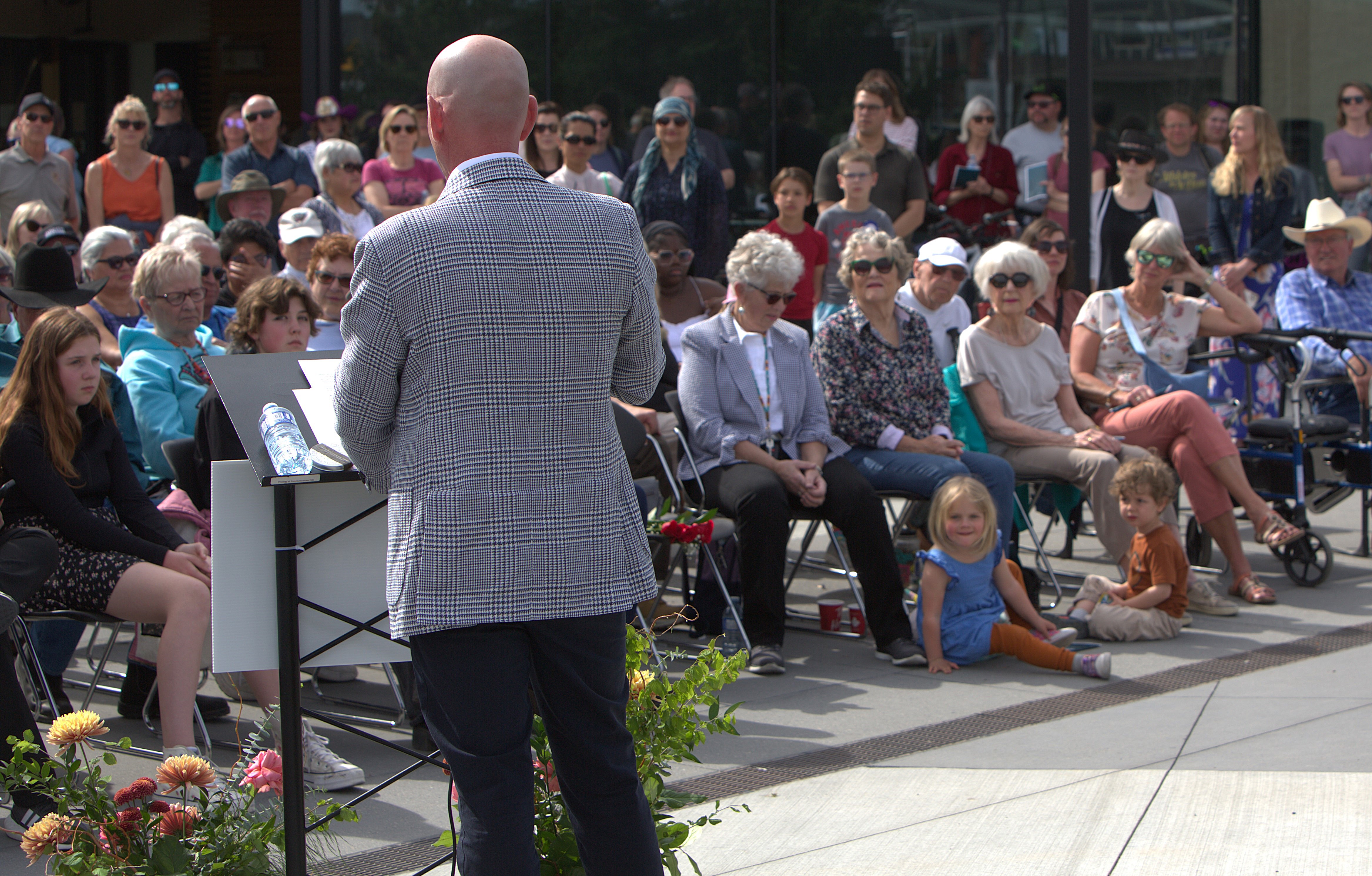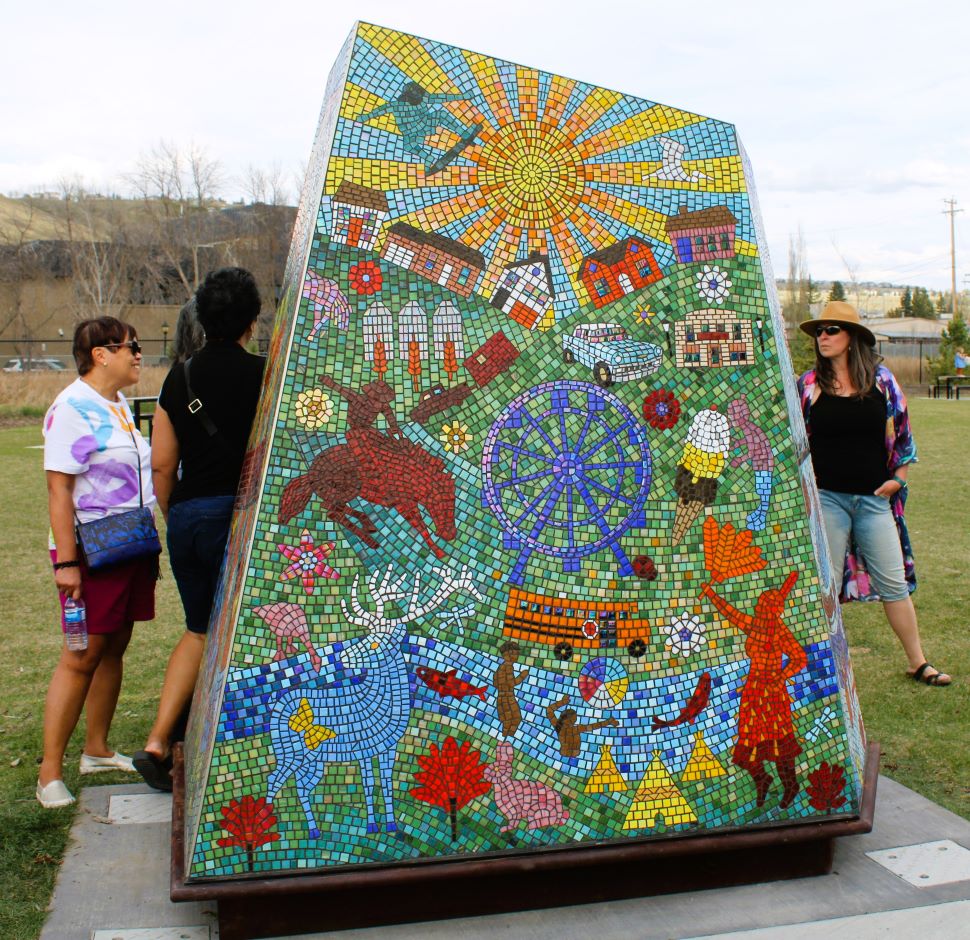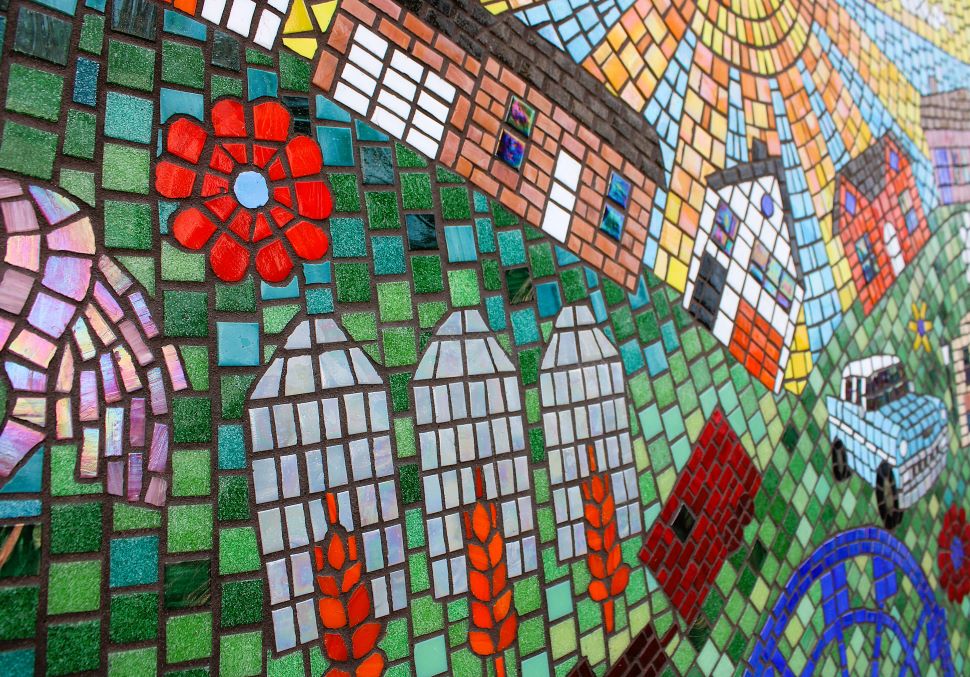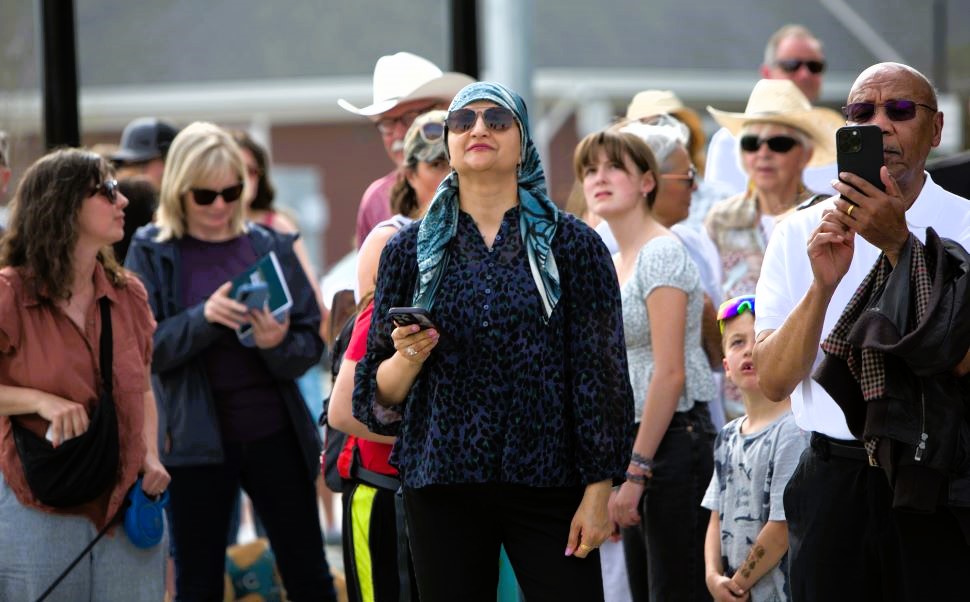Hundreds gathered yesterday to mark a major milestone in Cochrane’s cultural journey with the unveiling of three public art installations. The works celebrate the town’s past, present, and future, while also honouring the people and culture of the Stoney Nakoda Nation.
“I feel like there’s going to be a lot of cheering today,” said Mayor Jeff Genung, accurately predicting the crowd’s response as each piece was revealed. Distinctive in style yet unified in spirit, the artworks reflect Cochrane’s identity and diversity.
Karen Ho Fatt’s 'Cochrane Bricolage'
Karen Ho Fatt’s Cochrane Bricolage is a stunning six-sided mosaic composed of more than 23,000 tiles. Each facet represents the mountains that define Cochrane’s horizon and tells a piece of the town’s story—from its ranching heritage to its high-tech future led by innovators like Garmin.
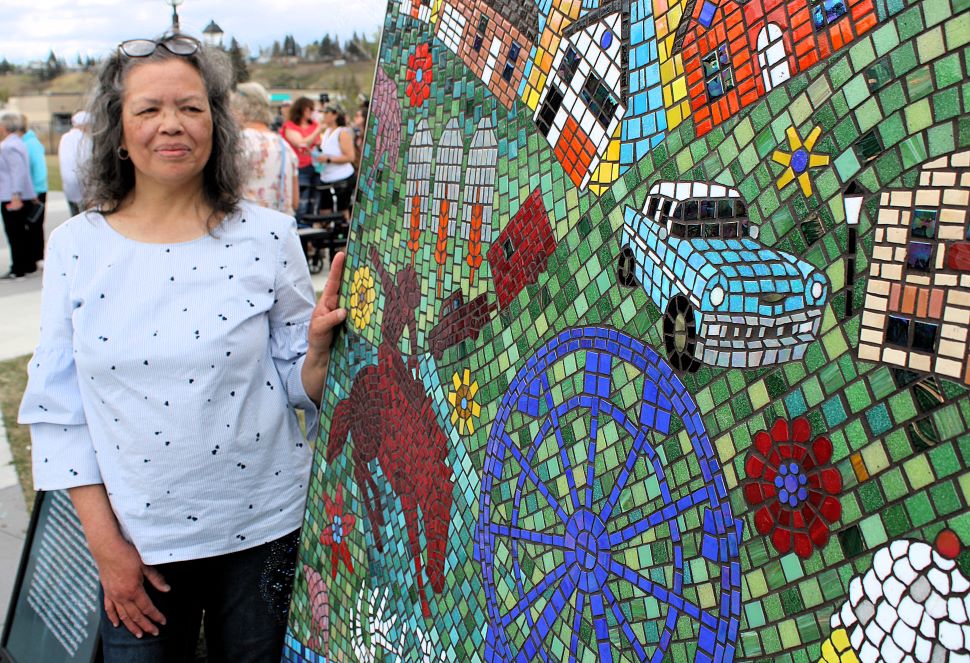
The artist also pays tribute to her personal introduction to the town, which began 30 years ago at Muller Windsports and, naturally, included a stop at McKay’s Ice Cream on Main Street.
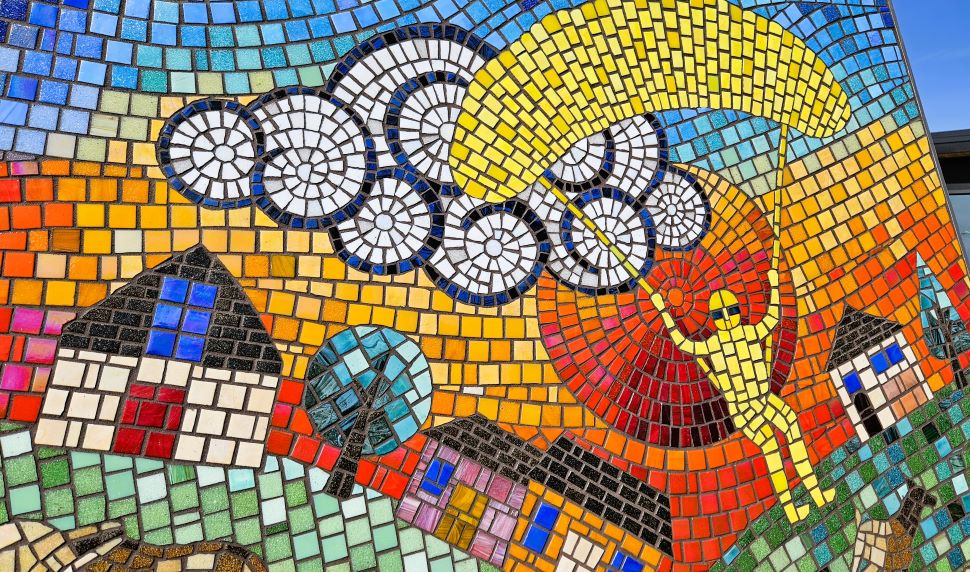
Working from her own colour drawings, Ho Fatt painstakingly assembled the 1" x 1" tiles she cut from an array of coloured tiles. A technique called optical mixing plays an important role in navigating the eye through many stories being told.
“You use different values and colours of the same hue,” she explained, using green as an example. “You put in different shades of green to create interest—especially across large areas.”
Pearlescent tiles add a luminous quality, drawing the eye to explore every detail.
“This is a milestone for me,” she said. “Mosaics have become my focus—because it lasts forever.”
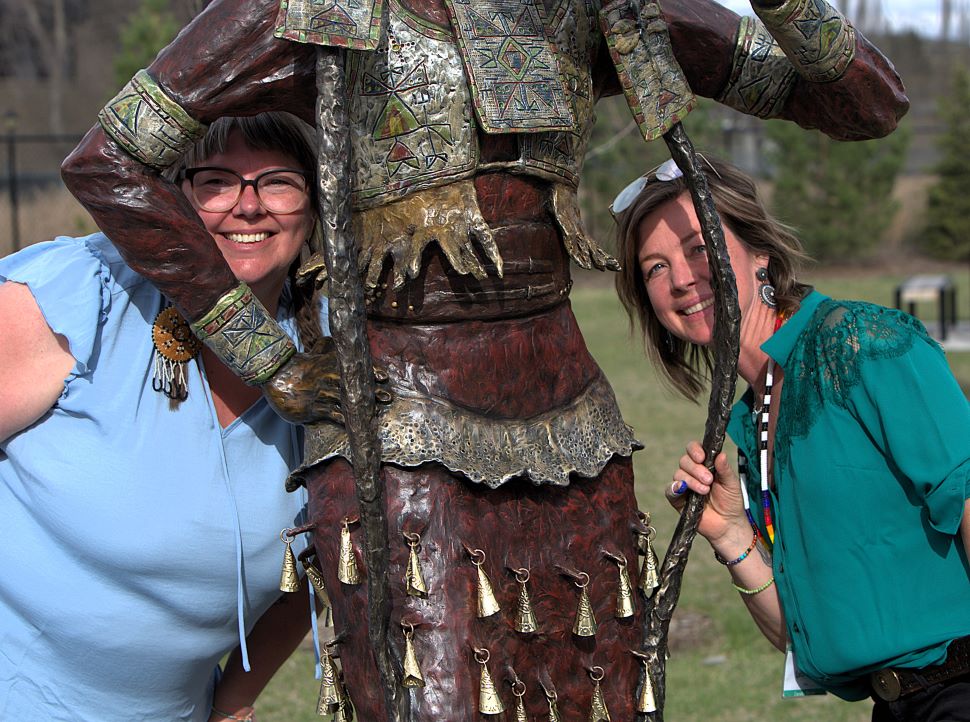
Malann Klassen and Lara Kruger
Artists Malann Klassen and Lara Kruger also contributed to the celebration with two distinct installations: Hereafter and Wagichi ha githni ichiyach. She Dances for Healing is the English translation. Each piece offers a unique interpretation of Cochrane’s evolving story, shaped by its people and surroundings.
Both were created to answer the theme of call-- representing past, present and future--with an overaching theme of home and belonging.
"From the beginning, we always wanted to engage the Indigenous community,specifically Mini Thni, because that's our immediate neighbours, and so we really diligent to engage that, and that's how all of those choices came to be."
Bringing She Dances for Healing to life took many hands.
"It was originally a clay sculpture that was built in my garage," explains Lara, who is the niece of "Mac" MacKenzie, the sculptor (also outfitter and cowboy) who created the Men of Vision which overlook Cochrane.
It moved to Studio West Bronze Foundation, who did the mould and poured the bronze, then moved to two other shops to complete.
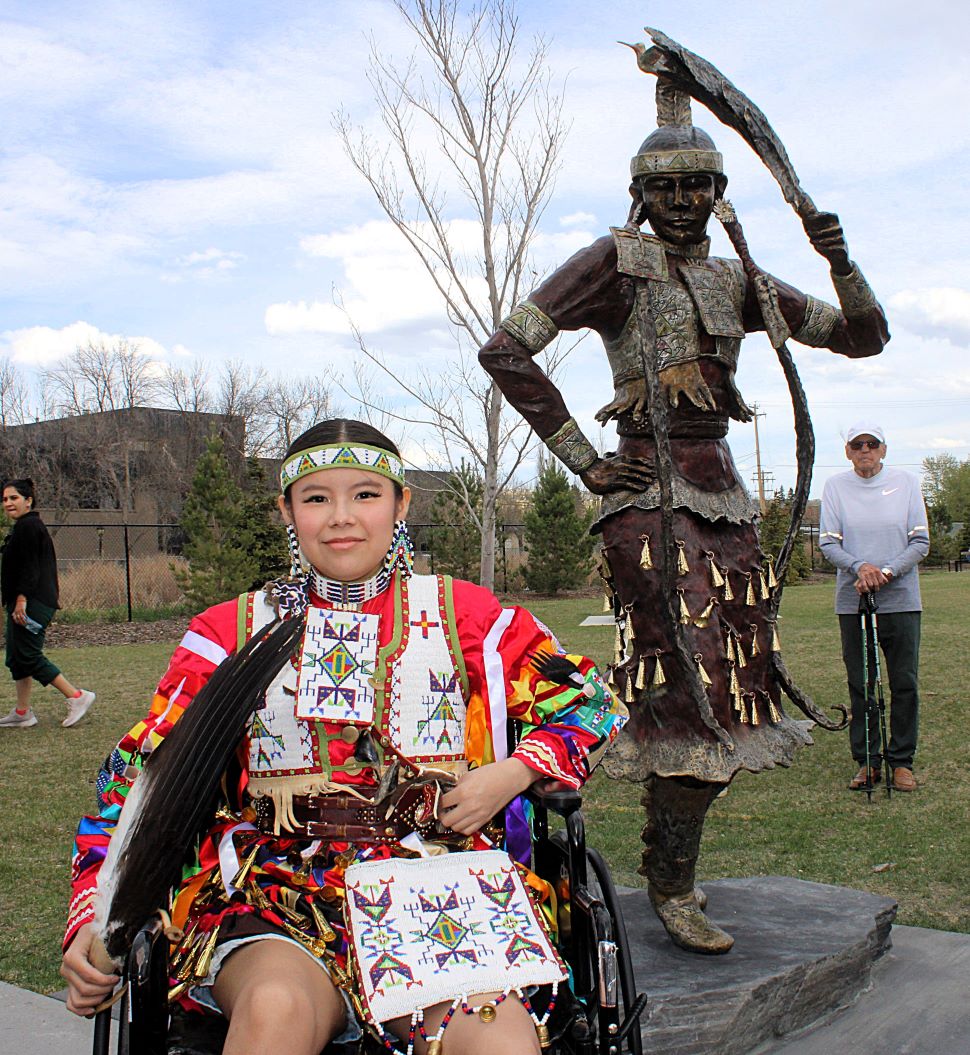
Daisynae Labelle, an artist in her own right in many forms, was the model used to create the sculpture. While delighted to have been selected to model for the sculpture, the spirit and respect with which it was created holds a much deeper meaning to her.
"When I look at the statue, it comes as a story to me, the real strength, survival, and who we are," she said.
It represents the power of Stoney Nakoda women and the healing ways of jingle dancers at a time of sickness.
"I'm proud of who we are, proud of where we come from, and everything we hope to stand for."
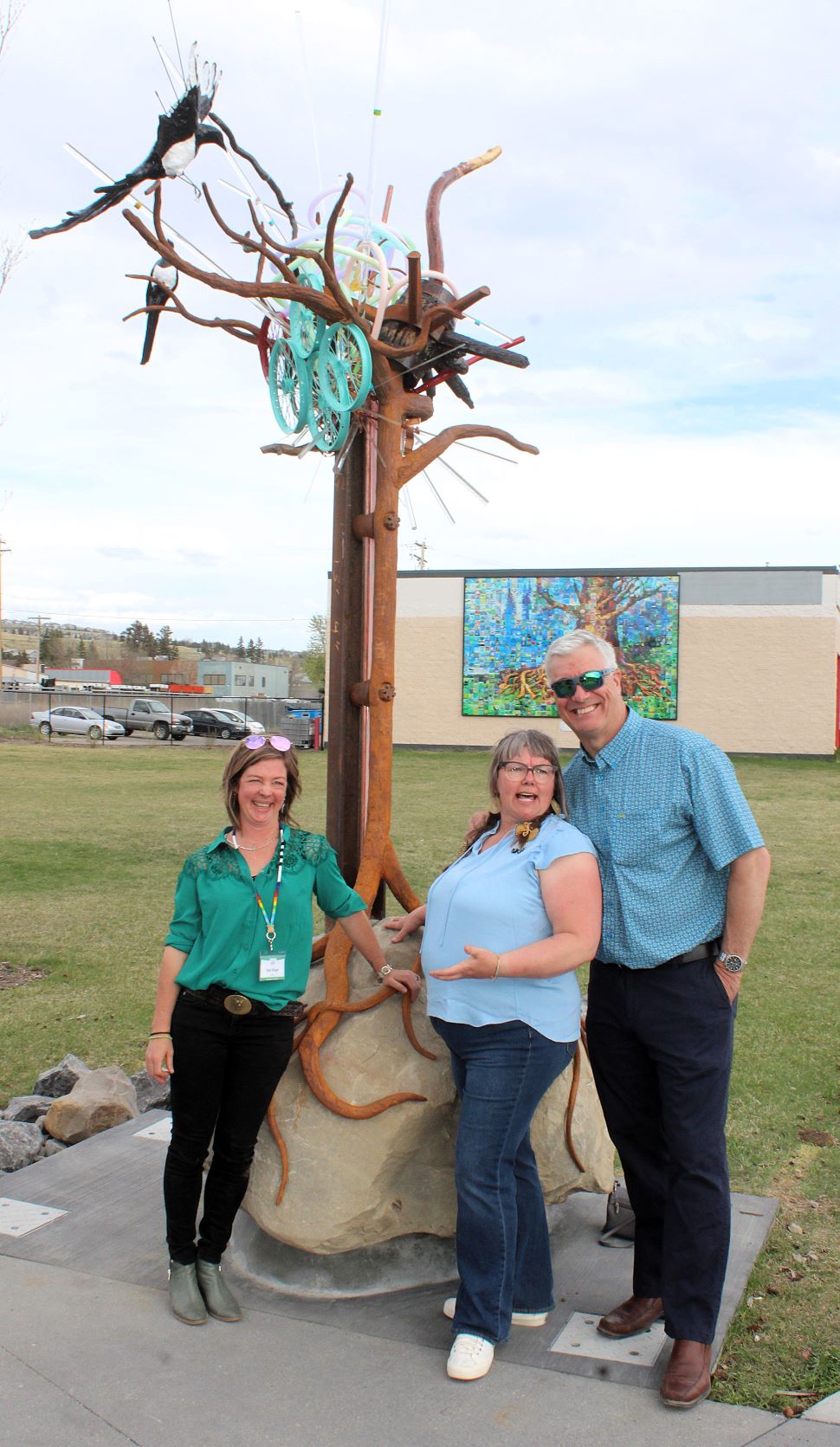
The Hereafter
At first glance, The Hereafter appears to be a tree. But the sculpture evolves—from representations of the natural environment, through our current world, to the innovations shaping the future—using a variety of materials and forms.
"So it represents the future, but without the past, we don't have that in context," explains Malann. "It brings together all those natural elements that are important to Cochrane, like the sandstone boulder and the Grandfather Tree, and then also that push-pull between the modern world, with the resin and the plastic and the found objects."
The artwork includes numerous references to the site's history as a transportation hub.
"There's an actual railroad track that goes through it, and then an old wagon wheel and new wheels of sorts, showing our evolution."
The design predates the fall of the Grandfather Tree. A piece of the actual tree is incorporated into the sculpture, reaching upwards toward the sky.

At the top, a multi-coloured nest of LED lights glows at nightfall.
"Mostly, we wanted to convey colour as our way of speaking to diversity, growth, multiculturalism and change, but also acknowledging the innovation sector of Cochrane," they explain.
"We wanted to speak to the innovation and the future—and the unknown of what's to come with all of the technology."
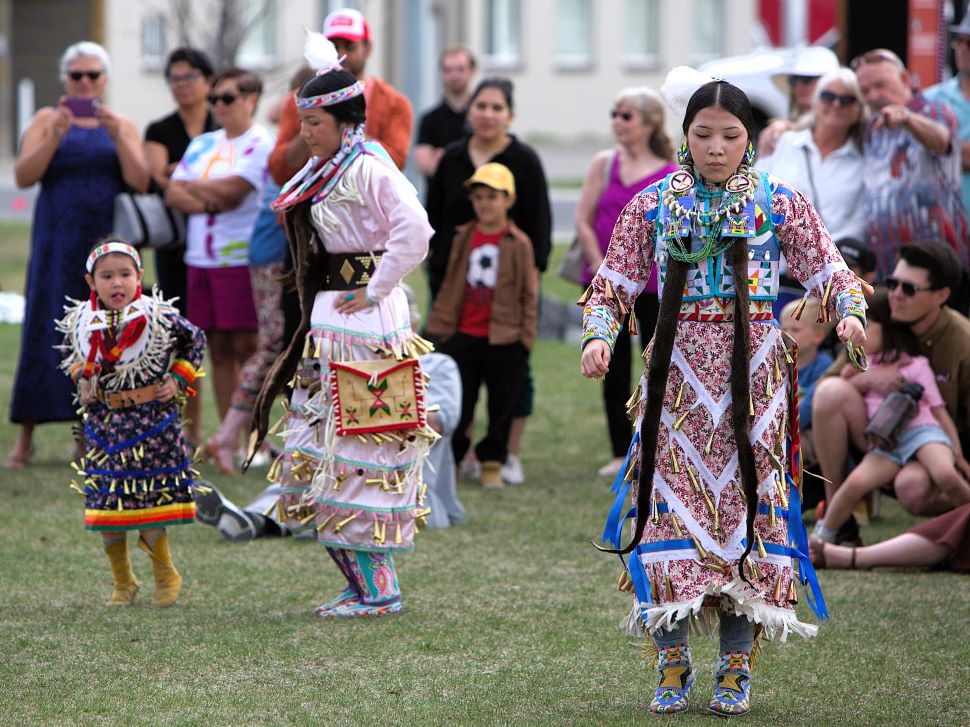
The commissioned public art sends an important message: that art is valued.
"There's some importance placed on it, there are resources going into it, and there's recognition that the cultural landscape matters to the health of the community," said Lara, executive director of the Route 22 Collective, which has recently moved to a central location in the Historic Downtown.
The selection of the artwork has led Cochrane to reach other significant milestones, she points out.
"All of these pieces have been created by women, which is another important step forward. Traditionally, all of the art in this town has been created by men, and much of it represents men. The fact that we have a First Nations woman featured as one of the sculptors, I think, is a big step forward."
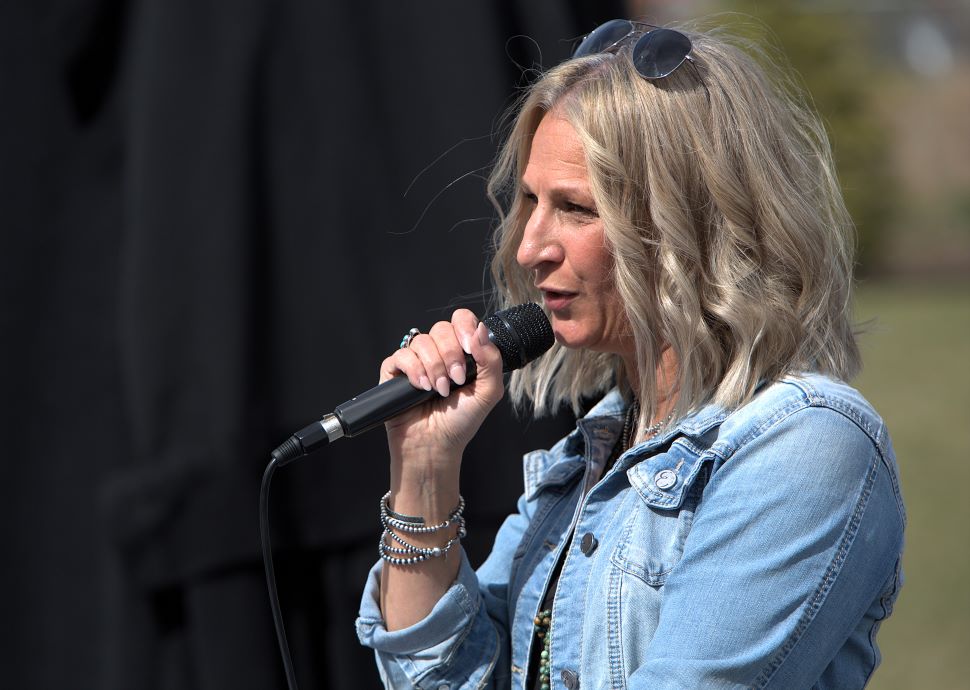
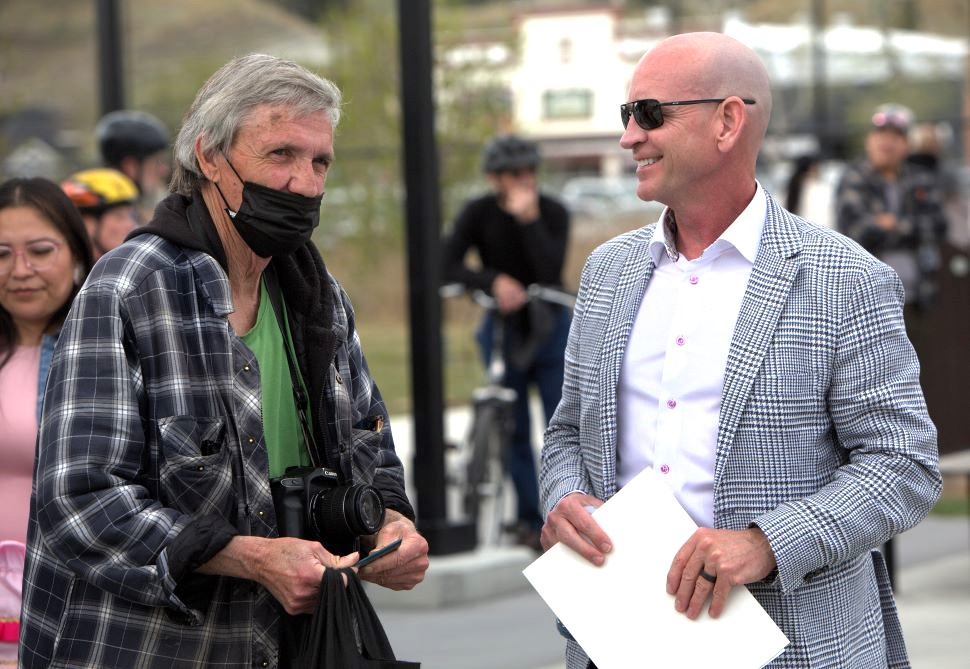
The public art was made possible by a federal Canada Community Revitalization Fund grant awarded in May 2022. It has had a major impact on what has become an important hub for Cochrane, which began with the construction of The Station — also largely funded by government grants.
The public art is the final touch to what has blossomed into a civic plaza Cochrane can be proud of.
RELATED STORY
“We have two acres here, we have the mural that was unveiled last year, we have the crossing into the historic downtown — and that’s a beautiful setting now,” said Mayor Jeff Genung. “As someone who has grown up here, it has completely changed my view of how I get around when I park on one side or the other.”



